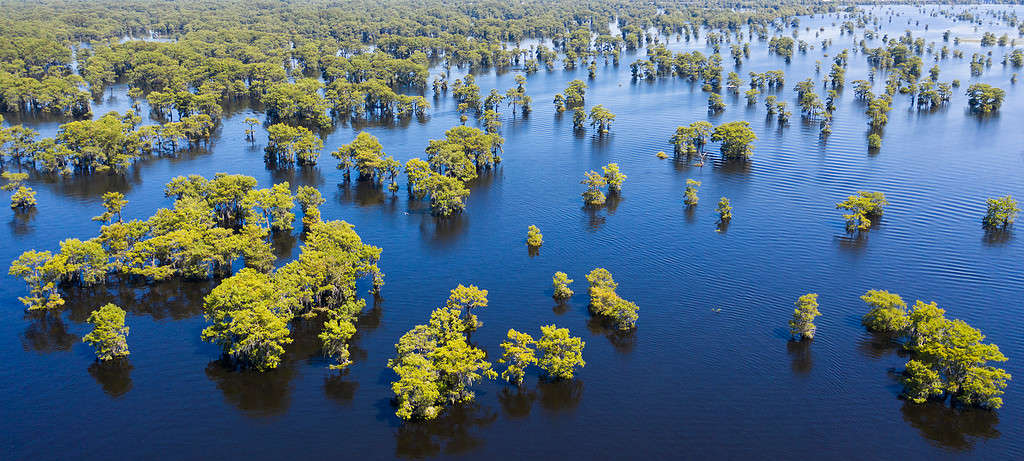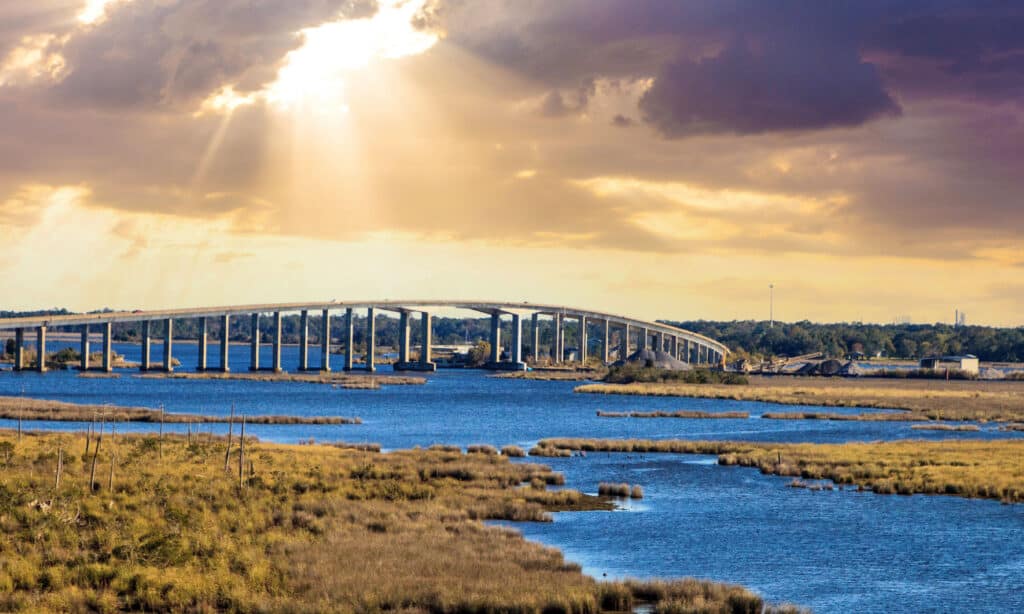With more than 250,000 rivers in the United States, it isn’t any wonder that some are less familiar to us than others. For folks in the northern regions of the USA, the Atchafalaya River may not even be a name heard before. For the folks in Louisiana, however, this short river has some life-altering influence, particularly in the larger area surrounding, known as the Atchafalaya Basin. Of course, the length, course, and how deep the Atchafalaya River runs are important components of the story here.
Where is the Atchafalaya River Located on a Map?

Majestic Atchafalaya river and swam is in Louisiana.
©Sasha Craig/Shutterstock.com
Bounded by the Mississippi River and its tributaries, the Atchafalaya Basin is located in the south-central corner of Louisiana. Stretching 140 miles, the basin begins near Simmesport, Louisiana, and expands down to the Gulf of Mexico.
How Deep is the River at its Deepest Point?
The average depth of the Atchafalaya River maintains at around 12 feet. In times of flooding and high water, the water levels may reach up to 20 feet on the rain levels gauge.
History of the Atchafalaya River and Basin
Dating back at least 2,500 years, and more likely at least 6,000 years, the cultural life around the Atchafalaya River and Basin has been important to the Native Americans living in the area. The natural levees and bayous of the area make for important features for Native Americans, the wildlife of the region, and the settlers who came to the area in the 1700s. Fur trade was the first draw for settlers coming into the Atchafalaya Basin area.
Ecology of the River and Basin

The Atchafalaya River and Basin are home to many species of birds, mammals, fish, and other wildlife.
©U.S. Army Corps of Engineers, photographer not specified or unknown, Public domain, via Wikimedia Commons – License
Being larger than the Everglades in Florida, the Atchafalaya Basin is home to a huge number of species of flora and fauna and is considered five times more productive than any other river basin in North America.
- 65 species of reptiles and amphibians make their home in the Atchafalaya Basin.
- More than 250 known species of birds live and function around the Basin.
- You’ll find the largest nesting concentration of bald eagles in south central USA in the Basin.
- More than 100 different species of fish and aquatic creatures make their home in the Atchafalaya Basin.
- Mammals found in the Basin include nutria, black bear, foxes, muskrats, beavers, raccoons, and otters.
What to Do in the Atchafalaya River

You’ll never run out of activities along and near the Atchafalaya River and Basin.
©iStock.com/LagunaticPhoto
Many popular activities may be enjoyed along the Atchafalaya River and in the Basin. Some of the favored activities include:
- Hiking
- Fishing
- Boating
- Hunting
- Airboat tours
- Local breweries
- Swamp tours
- Shopping
- Custom excursions
- Dining
- The Prehistoric Park
- Historic sites
Curious about other rivers in the USA? Check these out: Chicago River, Yellowstone River, Potomac River, Delaware River.
The photo featured at the top of this post is © U.S. Army Corps of Engineers, photographer not specified or unknown, Public domain, via Wikimedia Commons – License / Original
Thank you for reading! Have some feedback for us? Contact the AZ Animals editorial team.






